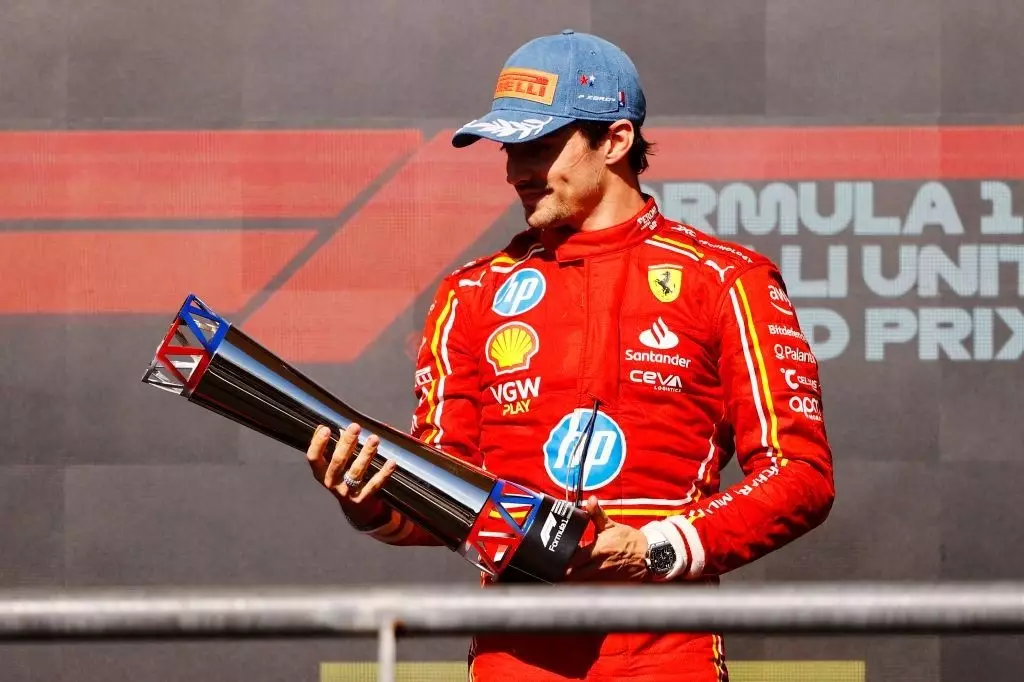The recent Formula 1 United States Grand Prix saw a surprising turn of events for both fans and participants alike as Pirelli, the official tire supplier, abruptly withdrew its specially designed trophies moments before they were to be presented. Initially intended to debut on the podium, the trophies, chiseled into a striking human silhouette dubbed “Heroo,” were conceived in collaboration with Italian designer Matteo Macchiavelli. However, Pirelli encountered a significant hiccup when they were informed of a similarity to another existing design. The alert, coming just a day before the event, left Pirelli with little choice but to retract its plans.
Pirelli’s vision for the Heroo trophy was steeped in the rich narrative of motorsport, aiming to celebrate the drivers not merely as athletes but as heroes navigating an intricate and perilous world of speed and technology. Their press release emphasized the extraordinary conditions in which these drivers compete, detailing the immense physical and mental demands placed upon them. By presenting a human-shaped trophy, Pirelli sought to encapsulate the essence of heroism associated with Formula 1 racing, where drivers manage immense odds at striking velocities.
It is, nonetheless, ironic that the very symbol meant to honor these athletes became mired in controversy before its inception. The design was expected to be a remarkable demonstration of creativity—a golden-yellow helmet topped with gold dust for the race winner, and silver and titanium accents for second and third place, respectively. However, drivers Charles Leclerc, Carlos Sainz, and Max Verstappen were instead presented with generic trophies as Pirelli scrambled to salvage its reputation amid the copyright concerns.
The abrupt revision of the trophy presentation sparked a wave of reactions throughout the Formula 1 community. While the drivers ultimately accepted their awards graciously, the disappointment was palpable among fans and stakeholders. Leclerc, who had anticipated the unique trophy, found himself instead posing with a more traditional design, a stark contrast to what had been eagerly promoted in the weeks leading up to the event.
Additionally, while Pirelli provided special wind tunnel tires engraved with the finishing positions and the American flag as compensatory items, the excitement surrounding the initial trophy design overshadowed these tokens. Speculations about the fate of the limited-edition replicas that were to be made available for fans further added to the unrest, as the original press release detailing these plans has since vanished from Pirelli’s website.
This episode serves as a crucial reminder of the intricacies intertwining branding, intellectual property, and public expectations. Pirelli’s initial misstep highlights the necessity for thorough vetting processes before unveiling products, especially in sectors as scrutinized as Formula 1. This incident could potentially have long-lasting ramifications on the brand’s reputation if not managed effectively.
With the heightened sensitivity surrounding design originality, it becomes paramount for companies like Pirelli to not only innovate but to ensure that their creative endeavors do not inadvertently infringe upon existing copyrights. Ultimately, while the intent behind the Heroo trophy was laudable, the resulting fallout underscores the delicate balance between creativity, recognition, and respect for intellectual property in the ever-evolving landscape of motorsport.


Leave a Reply